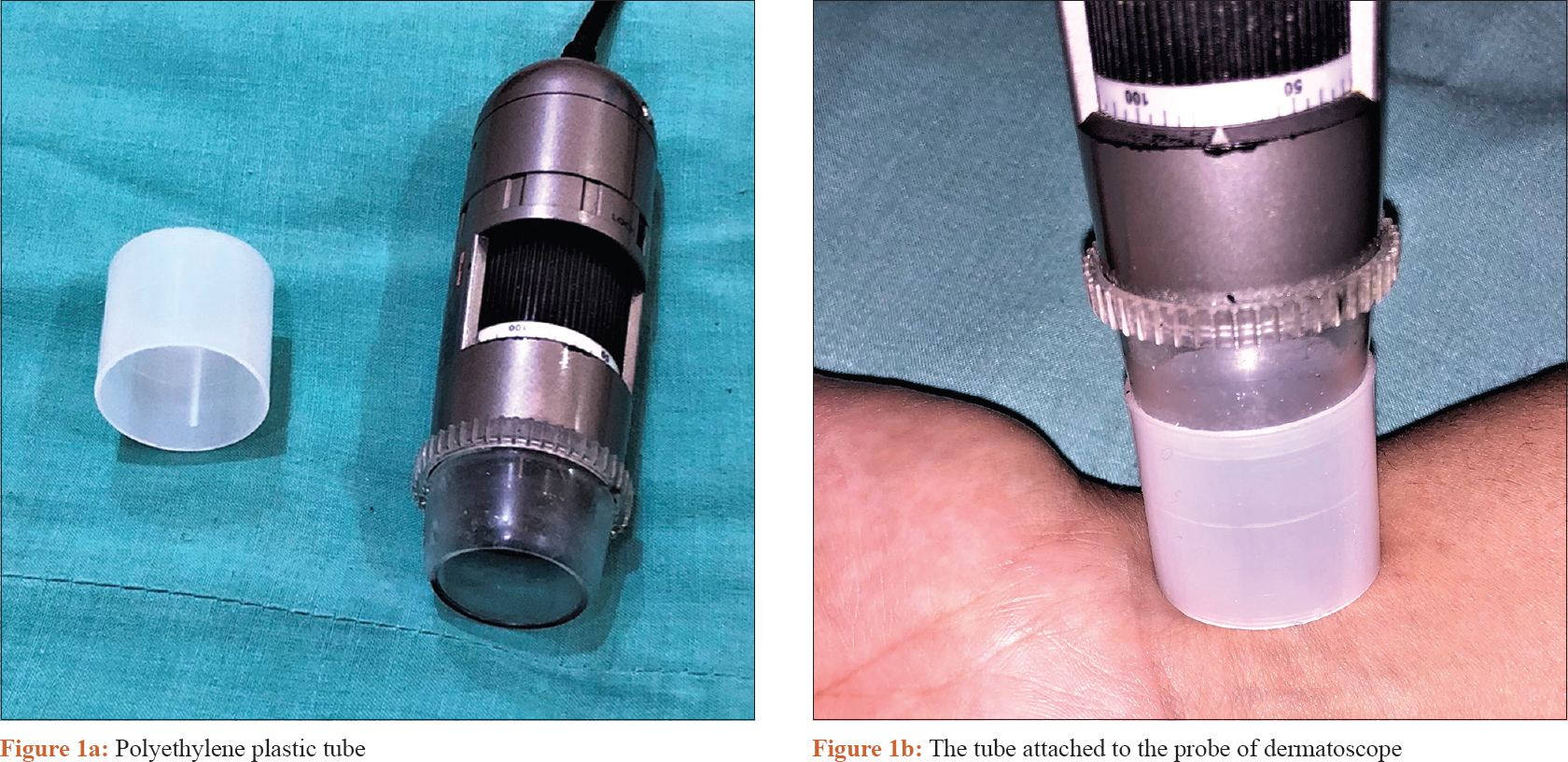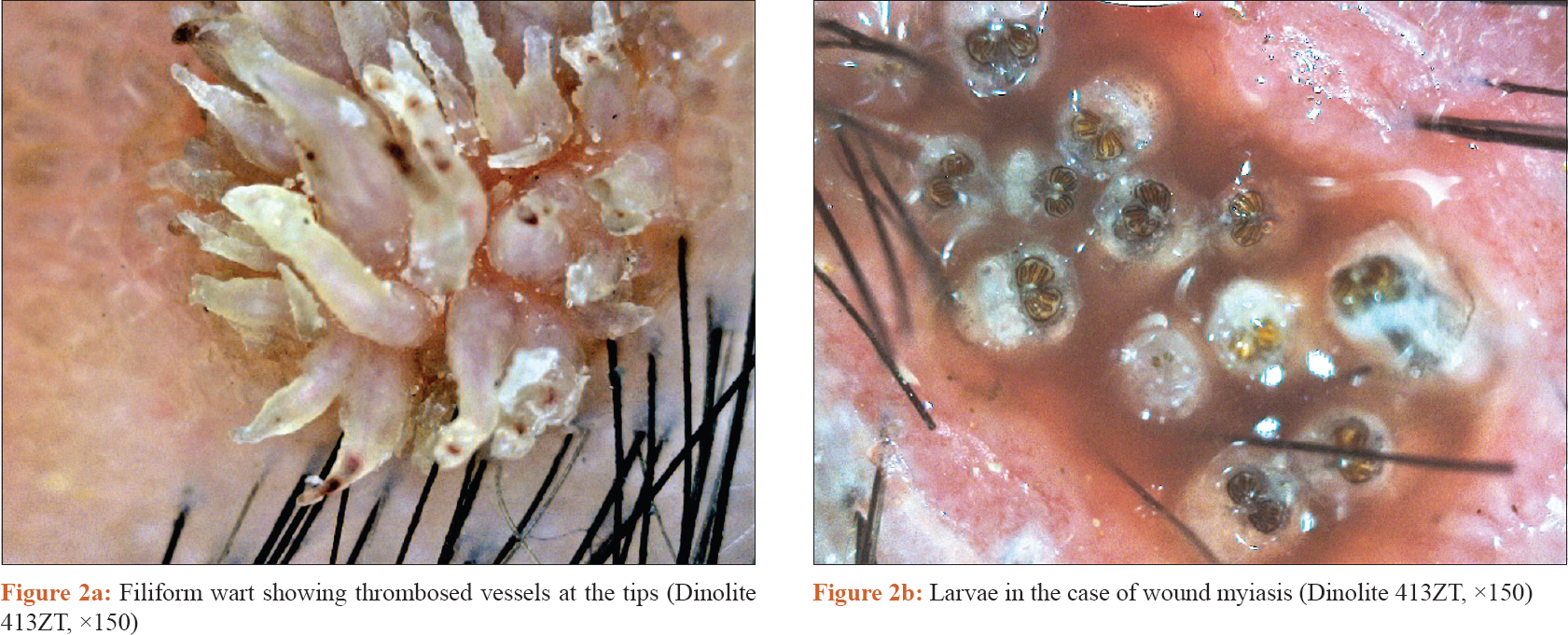Translate this page into:
Polyethylene tube as an attachment to universal serial bus (USB) dermatoscope for preventing cross-infection
Correspondence Address:
Chander Grover
Department of Dermatology and STD, University College of Medical Sciences and GTB Hospital, New Delhi - 110 095
India
| How to cite this article: Jakhar D, Grover C, Kaur I. Polyethylene tube as an attachment to universal serial bus (USB) dermatoscope for preventing cross-infection. Indian J Dermatol Venereol Leprol 2020;86:459-460 |
Problem
The applications of dermatoscopy now include a range of parasitic infestations and infective conditions, such as bacterial, fungal and viral infections. The dermatoscope often comes in contact with infective lesions and could act as a carrier for nosocomial infections. Demonstration of the human papillomavirus (HPV) DNA on dermatoscope's lens and its ineffective removal by antiseptic cleansing wipes, raises concerns.[1] Chattopadhyay et al. demonstrated the presence of methicillin-resistant Staphylococcus aureus and Bacillus sp. on the contact dermatoscopes.[2] These possibilities raise medical, ethical and even legal concerns. Although the concern is more with the contact dermatoscopes, even the noncontact ones are not exempted from this possibility.[3] Various measures that are proposed in the literature are not applicable to a USB dermatoscope.[4],[5] The disposable front cap provided with some contact dermatoscopes are not useful for USB dermatoscopes.
Solution
We devised a simple, cost-effective innovation for use with USB dermatoscopes. Leucoplast adhesive tapes are commonly available in clinics and hospitals. The plastic tube which forms the core of these tapes [Figure - 1]a, was used as a front attachment for the USB dermatoscope [Figure - 1]b. It functions as a spacer between the skin and the device. Moreover, a single tube can be cut into 2–3 pieces. These tubes can be kept overnight in glutaraldehyde solution for sterility. The sterile tubes can be attached to the probe of the USB dermatoscope prior to performing dermatoscopy which ensures that the probe or the cover cap does not come in contact with the skin surface. Later, it can be discarded after use.
 |
| Figure 1: |
The distinct advantages offered by the polyethylene tube include easy availability and low cost. The circumference of such tubes is comparable to that of the front piece of USB dermatoscope; hence allowing a comfortable fit. At the same time, it does not compromise the image quality [Figure - 2]a and [Figure - 2]b. Thus, the polyethylene tube which was once considered a hospital waste can be put to better use. Innovative modalities and ideas are a need of the hour to utilize dermatoscopes for a range of lesions and avoid any negligence on the part of the treating physician.
 |
| Figure 2: |
Financial support and sponsorship
Nil.
Conflicts of interest
There are no conflicts of interest.
| 1. |
Penso-Assathiany D, Gheit T, Prétet JL, Aubin A, Tommasino M, Mougin C, et al. Presence and persistence of human papillomavirus types 1, 2, 3, 4, 27, and 57 on dermoscope before and after examination of plantar warts and after cleaning. J Am Acad Dermatol 2013;68:185-6.
[Google Scholar]
|
| 2. |
Chattopadhyay M, Blackman Northwood M, Ward B, Sule J, Burrows NP. Are dermatoscopes a potential source of nosocomial infection in dermatology clinics? Clin Exp Dermatol 2014;39:401-3.
[Google Scholar]
|
| 3. |
Haliasos EC, Kerner M, Jaimes-Lopez N, Rudnicka L, Zalaudek I, Malvehy J, et al. Dermoscopy for the pediatric dermatologist part I: Dermoscopy of pediatric infectious and inflammatory skin lesions and hair disorders. Pediatr Dermatol 2013;30:163-71.
[Google Scholar]
|
| 4. |
Mun JH, Park SM, Ko HC, Kim BS, Kim MB. Prevention of possible cross-infection among patients by dermoscopy: A brief review of the literature and our suggestion. Dermatol Pract Concept 2013;3:33-4.
[Google Scholar]
|
| 5. |
Kaliyadan F, Kuruvilla J. Using transparent adhesive tape to prevent cross infection during contact dermoscopy. Indian J Dermatol Venereol Leprol 2016;82:744.
[Google Scholar]
|
Fulltext Views
3,403
PDF downloads
2,394





